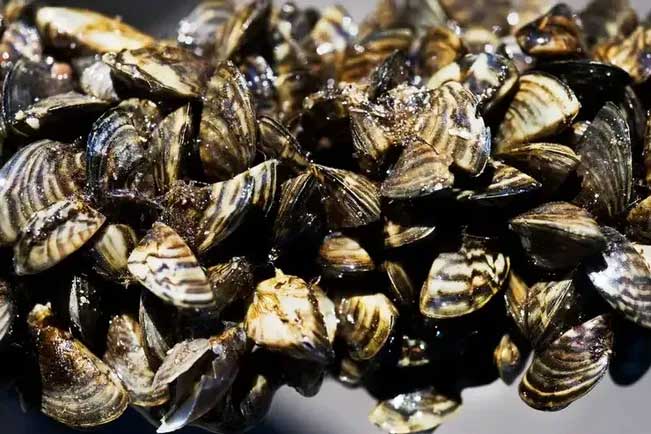Top 6 Asian plants and animals that are an obsession with Americans
Humans are used to changing the environment around them, in the direction of doing more harm than good. Each fallen forest will have many buildings and parking lots to quickly replace, no exaggeration to say that humanity is digging its own grave. Sometimes we even unknowingly (or intentionally) create opportunities for exotic plants and animals to expand their territories, negatively impacting the native ecosystems of many countries around the world and their activities. production activities of the people.
The United States is one of the countries that suffers heavily from this problem, with an estimated loss of more than $120 billion. Here are a few notorious invasive species that have made America its second home:
1. Hydroponic plant

Its explosive growth immediately dwindled the population of other plants.
Privet is a common exotic plant in the southern United States, it is a shrub in the genus Ligustrum, originally imported from Asia as an ornamental plant. However, the United States at that time had a very small number of shrubs like hyacinth, so this plant quickly encroached on the natural environment. Its explosive growth immediately dwindled the population of other plants, affecting native pollinators such as butterflies and insects.
The ancient Chinese variety (Ligustrum sinense) causes an obsession for the entire southern nature, according to the US Department of Agriculture. If that's not bad enough, chloroplasts are plants that emit more CO2 than normal plants. This makes it a real hassle.
2. Zebra mussels (Dreissena polymorpha)

This mussel has tremendous destructive power.
The name comes from the black stripes on their shells, which were first discovered in the Great Lakes in the late 1980s. They may have come from the Caspian Sea of Asia. Since their discovery, science has made great efforts to prevent their spread.
These mussels are incredibly destructive, they reproduce quickly and destroy local mussel populations with tremendous speed as they move to new freshwater sources. They can even grow to the point of clogging the water supply lines of power plants and wastewater treatment plants.
So far, this clam has only been discovered in the eastern half of the United States. Late last year, many nature organizations issued an urgent notice that zebra mussels were contaminating seaweed balls (aquatic filamentous algae) commonly sold and used in household aquariums. in 21 states. This is a warning to customers to check their seaweed balls and quickly take special measures to get rid of them.
3. Asian longhorn ticks

This breed of tick is especially harmful to livestock, they have the ability to reproduce asexually and attack herds.
Ticks have completely made America their native home, and they are a threat to public health because of their ability to harbor diverse strains of bacteria. To make matters worse, the New Jersey team reported they discovered a new species of tick in American backyards in 2017: the Asian long-horned tick (Haemaphysalis longicornis).
They were able to reach the United States by clinging to the fur of pets or other animals that had moved from Asia. Since then, the Asian long-horned tick has been detected in 17 states, including New York, Georgia and Tennessee. This mite is especially harmful to livestock, they have the ability to reproduce asexually and attack a herd of a cattle to suck blood. Currently, science has not determined the risk of these ticks to humans, some studies show that they are the cause of some diseases caused by ticks in humans such as Rocky Mountain fever.
4. Spotted Lanternfly

This insect is especially dangerous for fruit trees and agricultural crops.
Spotted lanternfly is an insect that first appeared in Pennsylvania around 2014, believed to be native to southern China, Taiwan, and Vietnam. This insect quickly spread throughout eastern North America. Spotted lanternflies are not harmful to humans but they are especially dangerous to fruit trees and agricultural crops, having the ability to hinder plant growth by secreting a residue called honeydew. The reason Spotted lanternfly invades so quickly is because their eggs are often stuck on people's clothes and shoes, creating conditions to spread to many places.
The situation is so tense that New York and Pennsylvania officials last summer encouraged residents to try to kill any Spotted lanternfly they came across. However, the most common and effective way is still to kill with insecticides.
5. Asian Carp

The gluttonous invaders began to overwhelm the native species, leaving after running out of food.
Carp, originating in Europe and Asia, became a nuisance for Americans 100 years ago. The recently introduced carp, black carp, grass carp, and silver carp are much worse.
Initially, they were imported only for livestock farming, but because of rains or certain incidents, these fishes found their way into the wild. The gluttonous invaders began to overwhelm the native species, leaving after running out of food. Their impact has only been detected in the Mississippi River at the moment, but the river system is linked to many other lifeforms, so widespread encroachment is only a matter of time.
6. Asian Giant Wasp

Just a few wasps are enough to wipe out an entire hive in a few days.
America is the capital of many invasive species of flora and fauna, one of which is a killer wasp called the Asian giant hornet (Vespa mandarinia). These deadly planes first arrived in Canada via cargo containers. In addition to their deadly venom, they are also known for their ability to hunt other bees for food. Just a few wasps are enough to wipe out an entire hive in a few days.
Natural bee populations living in native wasp areas have developed defenses, but bees in the United States have not yet. Therefore, many people worry about the future of bee populations, which are on the decline in the US.
To date, this species of bee has been reported mostly in Washington state. Although scientists work hard to destroy any wasp nests discovered, some believe it is only a matter of time before wasps spread across the United States.
- Many Asian animals are in danger of extinction
- Tsunami threatens Asian nuclear power plants
- Using blood leeches 'Asian unicorns'
- How is 'that' in plants?
- The animals have good looks, but the rear is unexpectedly cruel
- Tens of thousands of plants endangered
- Unexpected findings about the wisdom of plants and animals
- Americans can eat meat if animals are killed by vehicles
- Does the plant have sex?
- Southeast Asian pythons slaughtered many small mammals in the United States
- Extremely hidden carnivorous plants
- Asian lions are about to become extinct because of a pandemic from wild dogs
 Animal 'suffering' after hibernation
Animal 'suffering' after hibernation Why do goats climb well?
Why do goats climb well? Scientists were surprised to see chimpanzees eating turtles
Scientists were surprised to see chimpanzees eating turtles Giant catfish died deadly due to drought in Thailand
Giant catfish died deadly due to drought in Thailand